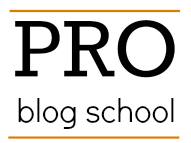Introduction
Did you know that nearly 1 in 10 students in the United States are homeschooled or enrolled in alternative educational programs like Abeka? This statistic highlights the growing trend of parents seeking tailored educational options for their children. In this landscape, the Abeka curriculum compared to public school education emerges as a significant topic for discussion.
This article aims to compare and contrast the Abeka curriculum with public school education, examining their unique features, strengths, and weaknesses. By understanding both educational approaches, parents can make informed decisions about their children’s educational paths.
Section 1: Abeka Curriculum
Overview
The Abeka curriculum is a Christian-based educational program founded in 1972 by Pensacola Christian College. Designed primarily for homeschooling and private schools, it focuses on providing a rigorous academic foundation while incorporating biblical principles. Abeka emphasizes traditional values and aims to cultivate both academic excellence and character development in students.
Academic Rigor
Abeka’s approach to academics is characterized by a strong emphasis on traditional teaching methods. The curriculum employs:
- Phonics: Abeka prioritizes phonics-based reading instruction, helping students develop strong foundational skills in reading and language.
- Mastery-Based Learning: Students are encouraged to achieve mastery in subjects before progressing. This ensures that they fully understand concepts, rather than just memorizing information for tests.
Character Development
In addition to academics, Abeka places a significant emphasis on character development rooted in Christian values. The curriculum integrates biblical teachings and moral principles into lessons, promoting:
- Integrity and Honesty: Students are taught the importance of ethical behavior in both academic and social contexts.
- Respect for Authority: The curriculum encourages respect for parents, teachers, and community leaders.
Pros and Cons
Pros
- Structured Environment: The curriculum provides a clear and structured learning path, which can be beneficial for some students.
- Faith Integration: Parents seeking a Christian-based education appreciate the incorporation of biblical teachings.
Cons
- Limited Perspective: Some critics argue that the curriculum may lack diversity in viewpoints and cultural understanding.
- Rigidity: The traditional teaching methods may not suit all learning styles, potentially leaving some students disengaged.
Section 2: Public School Education
Overview
Public schools serve as a primary educational system for millions of children in the United States. Funded by local, state, and federal governments, they aim to provide a free education to all students. Public schools are required to adhere to state-mandated curricula and standards, which can vary significantly across districts.
Curriculum Standards
Public schools often follow common core standards that emphasize:
- Critical Thinking and Problem-Solving: Public education encourages students to analyze information and develop solutions rather than rote memorization.
- Diverse Subjects: Public schools typically offer a broad range of subjects, including arts, sciences, and vocational training, catering to various interests.
Extracurricular Activities
One of the standout features of public schools is their range of extracurricular activities, which include:
- Sports Teams: Opportunities for physical education and competition.
- Clubs and Organizations: A variety of clubs that promote social skills and teamwork.
Pros and Cons
Pros
- Diversity: Public schools bring together students from different backgrounds, fostering social skills and cultural understanding.
- Accessibility: Education is free and available to all children, ensuring inclusivity.
Cons
- Overcrowded Classrooms: Many public schools struggle with high student-to-teacher ratios, which can limit individual attention.
- Standardization: The emphasis on standardized testing can sometimes stifle creativity and critical thinking.
Section 3: Comparative Analysis
Academic Rigor
When comparing academic rigor, the Abeka curriculum typically provides a more structured and traditional approach. In contrast, public schools often focus on fostering critical thinking skills through a variety of teaching methods.
Curriculum Content
The curriculum content also differs significantly:
- Abeka Curriculum: Often focuses on core subjects with a biblical integration.
- Public Schools: Offer a wider range of subjects, including arts and technology, often emphasizing contemporary issues.
Teaching Methods
Abeka relies heavily on traditional teaching methods, while public schools may utilize a mix of modern educational techniques, including collaborative projects and technology integration. This difference can affect how students engage with the material.
Character Development
Both systems emphasize character development but in different ways:
- Abeka: Integrates biblical principles, encouraging students to develop moral and ethical frameworks.
- Public Schools: Typically focus on civic responsibility and respect for diversity, fostering social skills.
Section 4: Factors to Consider When Choosing
Child’s Learning Style
Understanding your child’s learning style is crucial. Some children thrive in structured environments like Abeka, while others may excel in the more flexible and diverse settings of public schools.
Family Values and Beliefs
Parents should consider how their educational choices align with their personal beliefs and values. Families seeking a faith-based education may prefer Abeka, whereas those valuing diversity might lean toward public schools.
Long-Term Goals
Reflecting on long-term educational and career aspirations can guide your decision. For instance, if your child aims for a specific career that benefits from a diverse education, public schools may offer better preparation.
Cost and Accessibility
While public education is free, homeschooling with Abeka often involves tuition and material costs. Consider your budget and the accessibility of resources when making your choice.
Conclusion
Choosing the right educational path for your child is a significant decision that involves weighing the Abeka curriculum compared to public school options. Each has its unique strengths and weaknesses, catering to different educational philosophies and student needs. By carefully considering factors such as academic rigor, teaching methods, and your family’s values, you can make an informed choice that supports your child’s growth and success.
FAQs
What is the Abeka curriculum?
The Abeka curriculum is a Christian-based educational program focusing on traditional teaching methods and character development.
How does public school education differ from Abeka?
Public schools offer a diverse curriculum with an emphasis on critical thinking and problem-solving, while Abeka focuses on mastery-based learning.
What are the pros of the Abeka curriculum?
Advantages include a structured environment, strong academic rigor, and integration of biblical values.
What challenges do public schools face?
Public schools may struggle with overcrowded classrooms and the pressures of standardized testing.
How can I decide between Abeka and public school?
Consider your child’s learning style, family values, long-term goals, and the cost and accessibility of each option.











